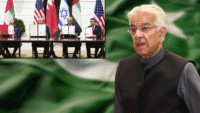Lahore, 18th June: Fatal and non-fatal accidents often happen which take precious lives of someone’s loved ones annually globally. These losses are emotional, mental, social, as well as economic.
According to World Health Organization’s Road Traffic Injuries, Key Facts, around 1.35 million peoples’ lives are lost globally because of road accidents, while these accidents cost many countries 3% of their Gross Domestic Product.
More than half of all road traffic deaths are among vulnerable road users: pedestrians, cyclists, and motorcyclists. Whereas 93% of the world’s death toll on the roads occurs in low- and middle-income countries, even though these countries have nearly 60% of the world’s vehicles. Road traffic injuries are the leading cause of death for children and young adults aged 5-29 years.
In Pakistan, from 2019-2020, a total number of accidents in the country, according to the Pakistan Bureau of Statistics, happened around 9,701, the fatal accidents numbered 4,403 and non-fatal accidents were 5,298, however, 5,436 persons were killed and 12,317 injured, and the total number of vehicles involved was 12,894.
The facts clearly portray that the transport system of Pakistan is unsafe, uneconomical, and uncomfortable. This implies that Pakistan is spending more money to operate, which creates potential risks for the people. It points out that the country’s transport operates in most unorganized traffic systems spread between provinces and within the province’s cities.
The cost has been high pertaining to the accidents taking place. The weak transport system has led to so many damages and issues. Like the public buses have no cleanliness, no any safety materials are placed inside the buses, the over crowd in the public buses leads to the increased chances of occurrence of accidents that are harmful to passengers.
The grim issue of Pakistan’s transport system is that neither the staff of buses are trained nor their skills are refreshed to run on sound management principles. As a result, passengers do not reach their destinations, and their families go through severe impacts due to those fatalities happened.
Moreover, issues they face vary to some extent but most felt among them are the shortage of public buses, people do not queue while boarding the bus, standing at entrance and exit gates of the bus, shortage of space at different stops to drop the passengers easily, shades for buses are not constructed to please awaiting passengers, harassment faced by the females in private transport, unprofessional behavior of transporters, gates are not closed while buses run on the road, and stress and fear on the faces of females in the combined bus.
The most important risk factors of the road accidents found are eye-opening that include speeding, driving after alcohol consumption, no use of helmets, seat-belts, and child restraints, distracted driving, dangerous road infrastructure, insecure means of transportation, poor post-accident care, and the insufficient implementation of traffic rules.
The magnitude of these highly determined risks could only be reduced by introducing a mechanism aimed at safe travel coupled with the implementation of safety rules and regulations. The happening of road accidents would be controlled if the authorities concerned stop turning blind eye to this longstanding grim issue that plays with the lives of hundreds of thousands of people annually in Pakistan.
Precisely, if the mitigating steps are not taken immediately then the people will be facing the problems further that could be unlike. The untrained/non-professional drivers have timely been contributing to the damages and deaths to passengers.
They are not professional and they do not hold required skills of driving safely. Resultantly, they are done with accidents because of no check and balance by any serious institution of the country particularly the most relevant one.
Undoubtedly, resolving transportation problem would financially cost much money but the lives of the people can be saved out that will benefit the country in many ways. A thorough systematic study can be good for passengers, travelers, government, and other stakeholders like business community; exploration & production sector, industries, agricultural entities, and some profit-oriented entities.
Immediately, Pakistan needs to develop better communication system following the development of transport policy that include three-their approach. Tier-1 focuses to resolve the transport issues of a city, tier-2 aims to deal with transportation between the cities, while tier-3 intends to rule out the movement of transport among the provinces.
These should also be keeping replacement of transport staff ready, and vehicle inspection program execution with full attention. It is time to increase the performance of transport system which provides basic facility to passengers.
The most needed part is to conduct in-depth empirical study in which causes of accidents are identified and assessed, further keeping in view the factors like social, health, and economic.
Merely the ‘will’ is needed to bring up the transport system that do zilch but saves the lives and guarantees safe travel. Only an effective and efficient transport policy would work out.
The writer is a policy researcher and analyst. He works as Associate Program Officer at Innovation and Entrepreneurship Centre, Office of Research Innovation and Commercialization, Mehran University of Engineering & Technology, Jamshoro. Email: furqanhyders@gmail.com Tweet: @furqanppolicy
Follow Baaghi TV to read all the latest and trending news!
Pakistan Democratic Movement ideology: Is PDM having eight shades of political Ideologies?






